
Annibale Bergonzoli, nicknamed "barba elettrica", "Electric Whiskers", was an Italian lieutenant general who served during World War I, the Spanish Civil War and World War II. In 1940 he commanded the defences of Bardia, Libya. In February 1941, after the disastrous Battle of Beda Fomm, Bergonzoli surrendered to Australian forces. He was held as a prisoner in India and the USA before being repatriated to Italy. Bergonzoli settled in his birthplace, Cannobio, and died there in 1973.

The 26th Infantry Division "Assietta" was a infantry division of the Royal Italian Army during World War II. The Assietta was classified as a mountain infantry division, which meant that the division's artillery was moved by pack mules instead of the horse-drawn carriages of line infantry divisions. Italy's real mountain warfare divisions were the six alpine divisions manned by Alpini mountain troops. The division was named for the Battle of Assietta in 1747 and based in Asti.
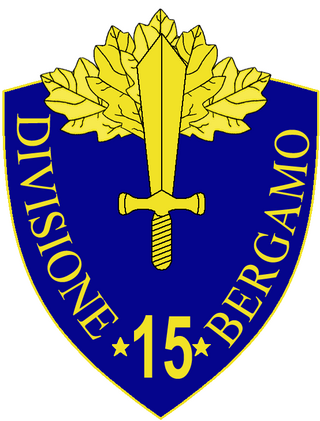
The 15th Infantry Division "Bergamo" was an infantry division of the Royal Italian Army during World War II. The Bergamo was based in Istria and named for the city of Bergamo.

The 22nd Infantry Division "Cacciatori delle Alpi" was an infantry division of the Royal Italian Army during World War II. The division was based in Perugia and named for the Cacciatori delle Alpi corps raised for the Second War of Italian Independence.

The 31st Infantry Division was a German infantry division of the Army during World War II. It participated in the invasion of Poland in 1939 then the invasion of France and the Low Countries in 1940. As part of Panzergruppe 2. of Army Group Centre, it was involved in the invasion of the Soviet Union in June 1941. After hard fighting throughout 1941 and 1942 it joined the 9th Army and fought in the Battle of Kursk in July and August 1943. Along with the rest of the 9th Army, the division conducted a fighting withdrawal for the remainder of 1943, during which it sustained heavy casualties. In the early stages of the Soviet Operation Bagration of June to August 1944, the 31st Infantry Division was destroyed, a fate which subsequently befell most of Army Group Centre. The division was officially disbanded on 18 July 1944.
The 538th Frontier Guard Division, also known as the Division z.b.V. 538. was a short-lived German division in World War II that participated in the invasion of Yugoslavia. It was disbanded immediately after the Yugoslav surrender.
The Fast Army Corps or Cavalry Army Corps was a Royal Italian Army army corps during World War II that participated in the invasion of Yugoslavia.
The VI Corps was a corps of the Royal Italian Army during World War II that participated in the invasion of Yugoslavia.
The XI Army Corps was a corps of the Royal Italian Army during World War II that participated in the invasion of Yugoslavia.
The Motorized Corps was a corps of the Royal Italian Army during World War II which existed between June 1939 and May 1942.
The XIV Corps was a corps of the Royal Italian Army during World War II that participated in the invasion of Yugoslavia.
The XVII Army Corps was an army corps of the Royal Italian Army during World War II.
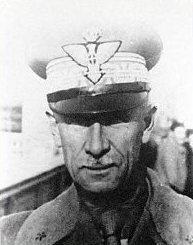
Federico Ferrari Orsi was a general in the Royal Italian Army during World War II.
Riccardo Balocco was a general in the Royal Italian Army that commanded the V Corps during the World War II Axis invasion of Yugoslavia in April 1941.
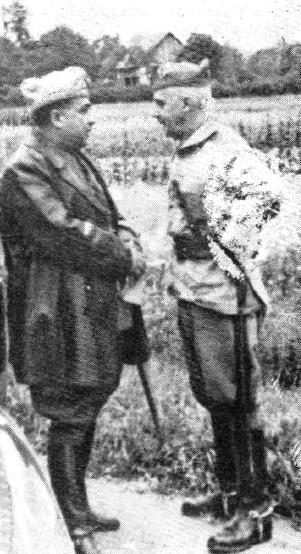
Mario Robotti was a general in the Royal Italian Army who commanded the XI Corps during the World War II Axis invasion of Yugoslavia in April 1941.
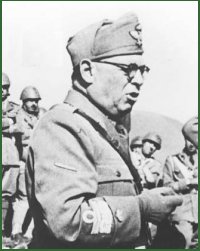
Francesco Zingales (1884-1959) was a general in the Royal Italian Army during World War II.
Giovanni Vecchi was a general in the Royal Italian Army who commanded the XIV Corps during the World War II Axis invasion of Yugoslavia in April 1941.
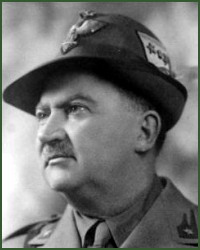
Gabriele Nasci was a general of the Alpine Corps in the Royal Italian Army.
The Army of the Po, numbered the Sixth Army, was a field army of the Royal Italian Army during World War II (1939–45).
The 4th Cavalry Corps was a cavalry corps of the Soviet Red Army, formed three times.








